First Published in AFKinsider.com 2/23/15
Africa’s contemporary artists arouse attention internationally thanks to their innovative approaches to artistic expression, which are steeped in tradition. Their work encompasses uniquely African socio-political realities inherent to the continent and museums, galleries and biennales worldwide can’t get enough of it.
Collectors vie for relatively accessibly priced work of Contemporary African artists, as demonstrated by recent intriguing blockbuster shows held at London’s Tate Modern Gallery for Meschac Gaba’s solo exhibit and at The Brooklyn Museum exhibit, “Double Take: African Innovations.”
Auction houses such as Bonhams have fetched record sums for African artists. Here are 12 contemporary African artists rocking the art world.
Sources: Blouin Art Info | Brooklyn Museum | Bonhams
Africa’s contemporary artists arouse attention internationally thanks to their innovative approaches to artistic expression, which are steeped in tradition. Their work encompasses uniquely African socio-political realities inherent to the continent and museums, galleries and biennales worldwide can’t get enough of it.
Collectors vie for relatively accessibly priced work of Contemporary African artists, as demonstrated by recent intriguing blockbuster shows held at London’s Tate Modern Gallery for Meschac Gaba’s solo exhibit and at The Brooklyn Museum exhibit, “Double Take: African Innovations.”
Auction houses such as Bonhams have fetched record sums for African artists. Here are 12 contemporary African artists rocking the art world.
Sources: Blouin Art Info | Brooklyn Museum | Bonhams
1. Kudzanai Chiurai, Zimbabwe (born 1981)
He began painting flowers. After studying abroad in South Africa, he became politically aware and has said, his most subversive act is having picked up a paintbrush. He gained respect for his dramatic mixed and his multi media compositions depicting critical socio-political issues of the region and was forced into exile for a charged portrayal of his country’s dictator, Robert Mugabe in his pieces Rau Rau and the Battle for Zimbabwe. His unique use of digital photography, editing and printing, painting, and, more recently, film serve his purpose to do “something important” with his art. His work is collected by Elton John, and has been exhibited by and is in the permanent collection of MoMa, NY, along with international solo and group exhibits.
Source: ArtSlant
He began painting flowers. After studying abroad in South Africa, he became politically aware and has said, his most subversive act is having picked up a paintbrush. He gained respect for his dramatic mixed and his multi media compositions depicting critical socio-political issues of the region and was forced into exile for a charged portrayal of his country’s dictator, Robert Mugabe in his pieces Rau Rau and the Battle for Zimbabwe. His unique use of digital photography, editing and printing, painting, and, more recently, film serve his purpose to do “something important” with his art. His work is collected by Elton John, and has been exhibited by and is in the permanent collection of MoMa, NY, along with international solo and group exhibits.
Source: ArtSlant
2. Nástio Mosquito, Angola (born 1981)
He said, “F*k original. Be genuine.” This talented multimedia performance artist nudges us out of our comfort zone toward mindful reflection through music, videos, the spoken word and a capella performances in galleries and on stage. Like his name might suggest, his works give us a nasty, often vicious sting right in our sense of self, jolting our awareness into a depth beyond our limited stereotypes.
Past exhibitions include, "9 Artists" at the Walker Art Centre in Minneapolis in 2013, and "Across the Board: Politics of Representation" at the Tate Modern in London in 2012. He has numerous exhibits including in the 29th São Paulo Biennial, Brazil, 2010. He lives and works in Luanda, Lisbon and Ghent.
Source: Nástio Mosquito
He said, “F*k original. Be genuine.” This talented multimedia performance artist nudges us out of our comfort zone toward mindful reflection through music, videos, the spoken word and a capella performances in galleries and on stage. Like his name might suggest, his works give us a nasty, often vicious sting right in our sense of self, jolting our awareness into a depth beyond our limited stereotypes.
Past exhibitions include, "9 Artists" at the Walker Art Centre in Minneapolis in 2013, and "Across the Board: Politics of Representation" at the Tate Modern in London in 2012. He has numerous exhibits including in the 29th São Paulo Biennial, Brazil, 2010. He lives and works in Luanda, Lisbon and Ghent.
Source: Nástio Mosquito
3. Peju Alatise, Nigeria (born 1975)
A new and emerging talent on the African art scene, perhaps “Rapture of Olurombi’s Daughter” (2013) best illustrates the work of this talented young artist, whose body-contoured colorful fabrics clothes invisible human archetypes. The defiant, winged woman of no limitations stands as testimony to the female form, her power lies elsewhere invisible in her series titled Wrapture.
Her work is a medley of folds, knots, and drapery of cloth dramatizing our clothed identities. She infuses a poetic humor into her figures’ gestures, as a Yoruban, she engages a philosophical language that seeks to redeem the “female folk.” She lives and works in Lagos.
Source: Peju Alatise
A new and emerging talent on the African art scene, perhaps “Rapture of Olurombi’s Daughter” (2013) best illustrates the work of this talented young artist, whose body-contoured colorful fabrics clothes invisible human archetypes. The defiant, winged woman of no limitations stands as testimony to the female form, her power lies elsewhere invisible in her series titled Wrapture.
Her work is a medley of folds, knots, and drapery of cloth dramatizing our clothed identities. She infuses a poetic humor into her figures’ gestures, as a Yoruban, she engages a philosophical language that seeks to redeem the “female folk.” She lives and works in Lagos.
Source: Peju Alatise
4. Tracey Rose, South Africa (born 1974)
Born in Durban, Rose is known for her provocative multimedia performances that incorporate video and photography. An ardent feminist — and once a boxing aficionado — she is adept at fusing complex social issues with pop effervescence to depict identity.
She uses body type, race and gender to evoke a visceral statement on disparities between them and their politicization in the social landscape. She has had solo and group exhibits worldwide and participated in the Venice Biennale among others. She lives in Johannesburg.
Source: Art Throb
5. Julie Mehretu, Ethiopia (born 1970)
Recipient of this year’s U.S. State Department National Medal of Arts, this artist renders large-format paintings and prints.She draws from elements of architecture, using city aerial maps to apply layer upon layers of acrylic to depict the density of the world’s metropolises.
Mehretu uses mixed media to create complexity. She has exhibited in MoMa, Walker Art Center, Guggenheim in New York and Berlin, as well as many other notable institutions and biennales. Mehretu was born in Addis Ababa and lives and works in New York.
Source: Walker Art Center
6. Meschac Gaba, Benin (born 1961)
In 1997, Gaba inaugurated his monumental signature piece in the Rijksmuseum in Amsterdam. It consists of 12 exhibition halls that depict his life fused to his art with names such as, “The Money Room,” and “The Marriage Room.” His work includes decommissioned bank notes and personal memorabilia.
The interactive Museum of Contemporary African Art traveled through Europe showcasing and calling attention to African art. The Tate Modern in 2013 purchased and exhibited the entire nomadic museum for its private collection. Gaba has exhibited worldwide including at the Sao Paolo and Venice biennales. He lives in Rotterdam.
Source: Tate Modern
7. Sokari Douglas Camp, Nigeria (born 1958)
An A-list would not be complete without Sokari Douglas Camp. A pioneer for women sculptors in Africa, she represents the first generation of artists having success in the international market. She relies on modern techniques but finds inspiration from traditional masks and costumes used for rituals in her homeland. Born and raised in Kalabari town in the Niger Delta, she draws from Kalabari culture and customs.
She has lived in London and addresses pertinent global issues in her work, using predominantly steel. Douglas Camp has had numerous solo and group shows all over the world. Permanent collections of her work can be found in the Smithsonian Institute in Washington, D.C. and London’s British Museum.
Source: Sokari Douglas Camp
8. Owusu-Ankomah, Ghana (born 1956)
Born in Sekondi-Takorad, Ghana, Owusu incorporates Adinkra symbolism in his work to address the concepts of identity and body. His symbols trace beyond spirituality, stimulating philosophical and sociopolitical discourse, insisting on an intercultural intercourse in our contemporary society.
He is considered a stellar artist of his generation, dabbling in the delicate balance between personal and collective consciousness. He lives in Bern, Germany.
Source: Owusu-Ankomah
9. Chéri Samba, Democratic Republic of Congo (b.1956)
Samba wa Mbimba N’zingo Nuni Masi Ndo Mbasi was a founding member of the Popular Painting School, focusing on everyday life in his country and the African continent. He places himself as a central figure in his work to be a spokesman of sorts. He would sign his work “Popular Painter.” He began as a sign painter and comic strip artist, influences that are noted in his work today. He narrates a story with bursts of color and word bubbles to provoke dialogue and attention.
He also illustrated magazines until his breakthrough in 1989 with his exhibition, “Les Magiciens de la Terre,” (Magicians of the World) at the Centre Georges Pompidou in Paris. He has exhibited and is in permanent collections worldwide, including the MoMa; the Venice Biennale, Venice, and the Tate Modern, London.
Source: MoMA | Chéri Samba
10. Abdoulaye Konaté, Mali (b.1953)
It’s difficult to describe the labor-intensive, stunning installations this prominent contemporary artist creates with mixed media. He uses mostly repurposed, readily available materials. He studied at the National Art Institute of Bamako and in Cuba, turning, in the 1990s from the easel to painstaking work involving collecting, classifying, dying, cutting, sewing and embroidering objects.
He makes monumental shimmering constructs that often seem to have an organic life of their own. Like most, if not all African artists, Konaté conveys the socio-economic-political-ecological life of the region, fusing ancient cultural traditions and contemporary manifestations.
He has exhibited worldwide including the Centre Pompidou and Musée National d´Art Moderne, Paris; Museum Kunstpalast, Dusseldorf; Sao Paulo Biennale, Brazil and many others. Born in Diré, he lives and works in Bamako and is director of its Conservatoire for Arts & Media.
Source: Iniva
It’s difficult to describe the labor-intensive, stunning installations this prominent contemporary artist creates with mixed media. He uses mostly repurposed, readily available materials. He studied at the National Art Institute of Bamako and in Cuba, turning, in the 1990s from the easel to painstaking work involving collecting, classifying, dying, cutting, sewing and embroidering objects.
He makes monumental shimmering constructs that often seem to have an organic life of their own. Like most, if not all African artists, Konaté conveys the socio-economic-political-ecological life of the region, fusing ancient cultural traditions and contemporary manifestations.
He has exhibited worldwide including the Centre Pompidou and Musée National d´Art Moderne, Paris; Museum Kunstpalast, Dusseldorf; Sao Paulo Biennale, Brazil and many others. Born in Diré, he lives and works in Bamako and is director of its Conservatoire for Arts & Media.
Source: Iniva
11. Fabrice Monteiro, Senegal (born 1972)
Born to a Belgian mother and Beninese father in Dakar, Monteiro studied industrial engineering and later worked as a model. In 2007 he met his mentor in New York City and embarked on an exceptional adventure as artist, photojournalist, fashion and portrait photographer. He has constructed a visual universe within his images that captures the rich beauty of the African face and soul, against the backdrop of apocalyptic landscapes.
His work has been featured in news stories and fashion spreads. It’s in the permanent collection of the Seattle Art Museum in the U.S., the Paris Hotel Rive Gauche, France and TOTAL foundation in Dakar, Senegal. Keep your eye on him, I know I will...
Source: Fabrice Monteiro
Born to a Belgian mother and Beninese father in Dakar, Monteiro studied industrial engineering and later worked as a model. In 2007 he met his mentor in New York City and embarked on an exceptional adventure as artist, photojournalist, fashion and portrait photographer. He has constructed a visual universe within his images that captures the rich beauty of the African face and soul, against the backdrop of apocalyptic landscapes.
His work has been featured in news stories and fashion spreads. It’s in the permanent collection of the Seattle Art Museum in the U.S., the Paris Hotel Rive Gauche, France and TOTAL foundation in Dakar, Senegal. Keep your eye on him, I know I will...
Source: Fabrice Monteiro
12. Ibrahim El Salahi, Sudan (born 1930)
El Salahi is considered the grandfather of African modernism. In the 1970s he was a diplomat. As undersecretary of the Sudanese Ministry of Culture, he became a political prisoner charged with anti-government actions. His paintings are a dance between Islamic, African, Arab and heavy Western influences. His work is said to evoke Picasso’s primitive period with dichromatic and bold lines, or Mondrian’s Electric Boogie, but always infusing his own vocabulary as a self-professed “picture maker.”
He was given a Tate Modern retrospective in 2013 titled a “Visionary Modernist.” He has exhibited and is collected worldwide. His studio is in Oxford, England.
Source: Tate Modern , Ibrahim El Salahi
13. El Anatsui, Ghana (born 1944)
Born in Anyanko, Anatsui takes the color and texture of his people's traditions and sculpts these into mutable forms that are like the cloth of nomads crossing the savannah. Their monumental pieces are a sweeping nod to abstract art of Africa and of Europe tracing, in a broader sense, the cultural exchange between the two and the relationship of colonize to colonized.
He works with noble materials of wood, clay and metal and incorporates discarded metal caps of liquor bottles, and other cast off materials pointing to the function of objects as refuse and symbol.
He has taught at the University of Nigeria, Nsukka since 1975. His works are in the public collections of the Metropolitan Museum of Art, New York; Museum of Modern Art, New York; Los Angeles County Museum of Art; Indianapolis Museum of Art; British Museum, London; and Centre Pompidou, Paris, among many others. He lives and works in Nigeria.
Born in Anyanko, Anatsui takes the color and texture of his people's traditions and sculpts these into mutable forms that are like the cloth of nomads crossing the savannah. Their monumental pieces are a sweeping nod to abstract art of Africa and of Europe tracing, in a broader sense, the cultural exchange between the two and the relationship of colonize to colonized.
He works with noble materials of wood, clay and metal and incorporates discarded metal caps of liquor bottles, and other cast off materials pointing to the function of objects as refuse and symbol.
He has taught at the University of Nigeria, Nsukka since 1975. His works are in the public collections of the Metropolitan Museum of Art, New York; Museum of Modern Art, New York; Los Angeles County Museum of Art; Indianapolis Museum of Art; British Museum, London; and Centre Pompidou, Paris, among many others. He lives and works in Nigeria.
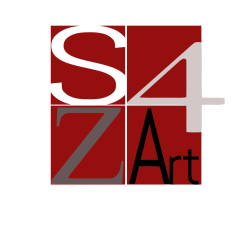
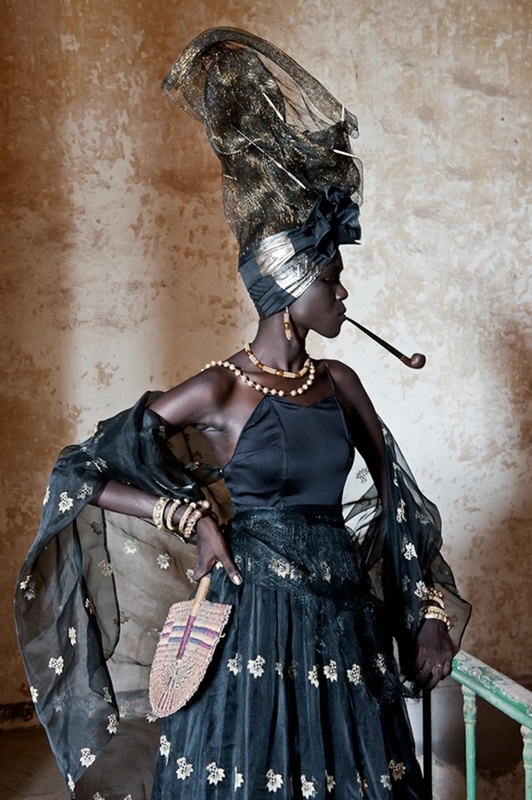
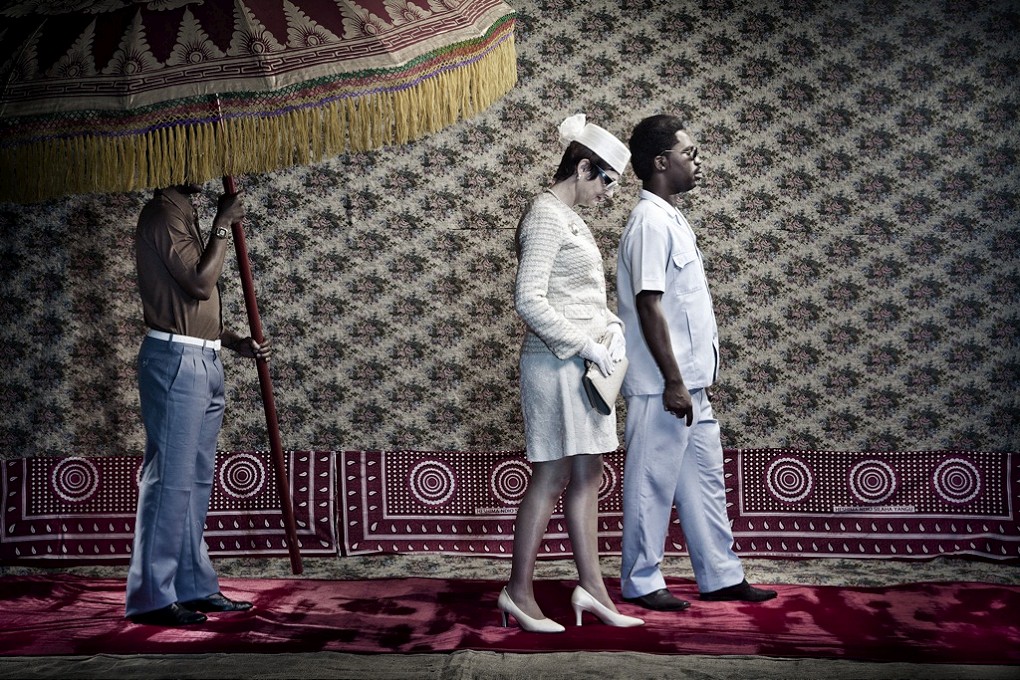
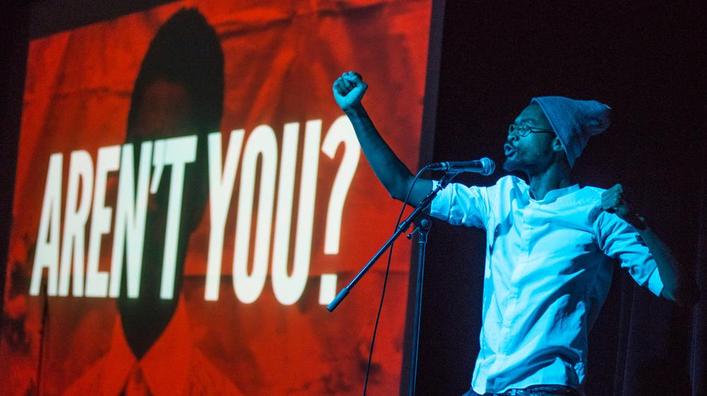
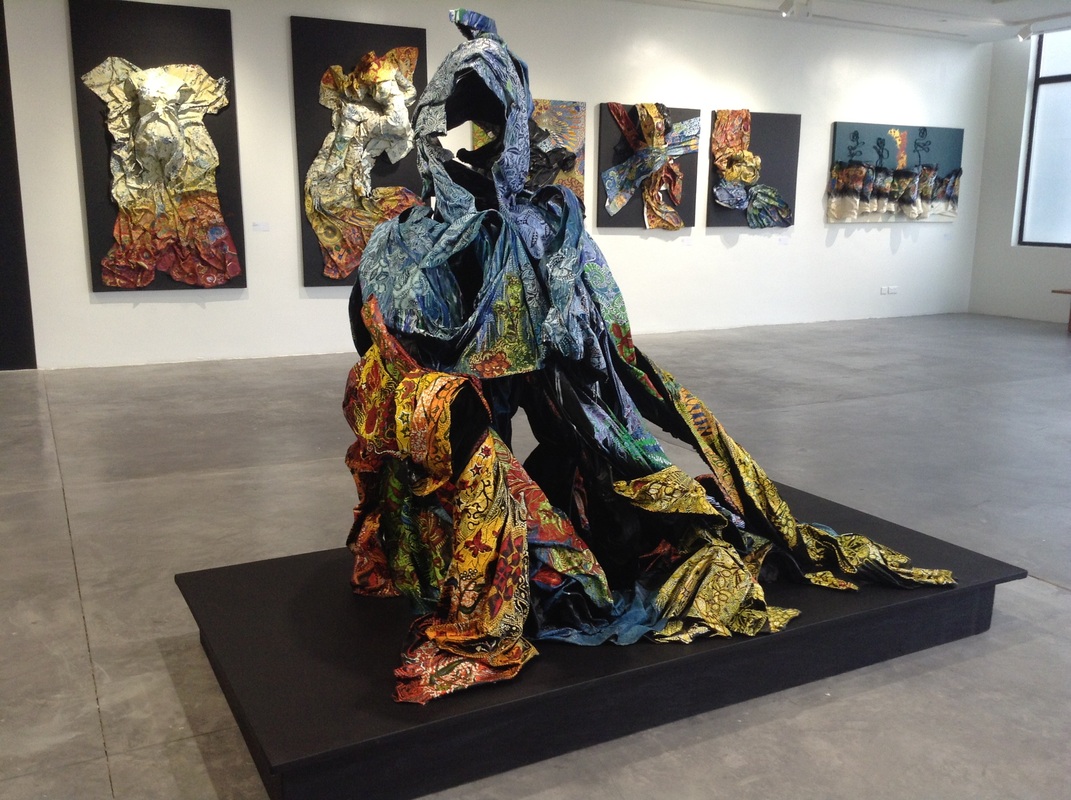
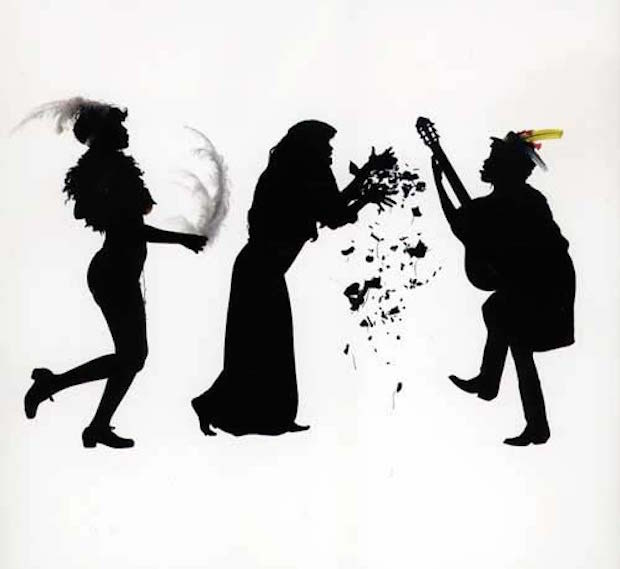
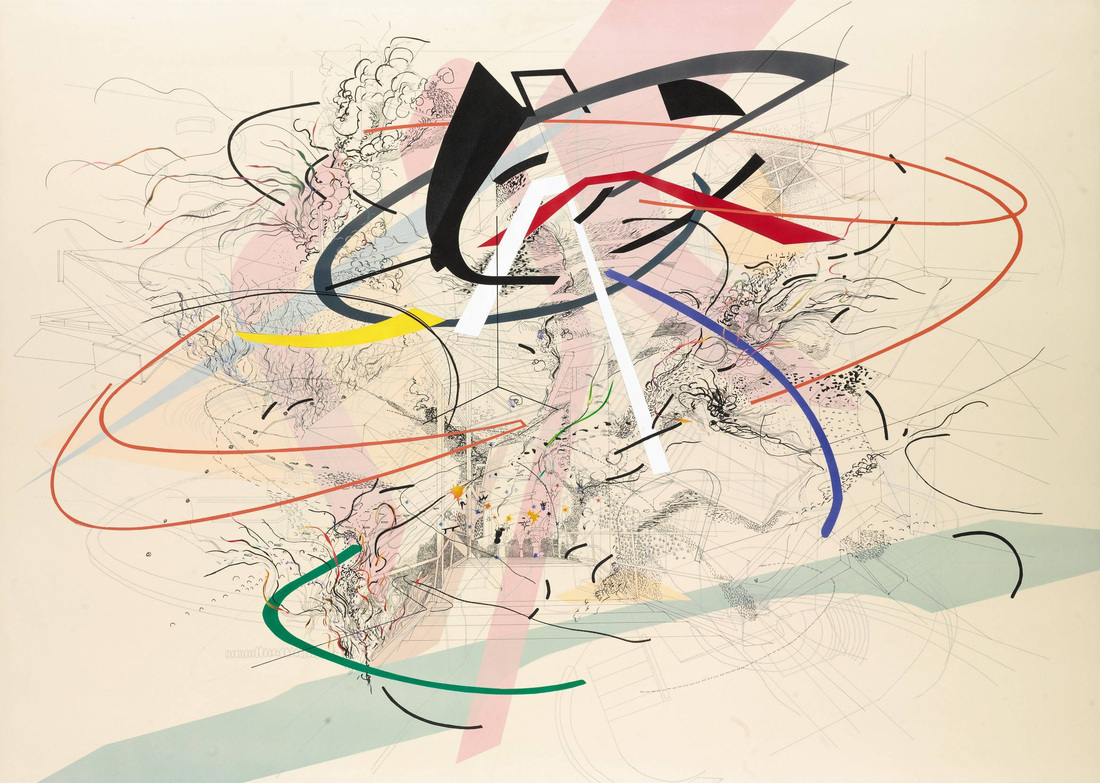
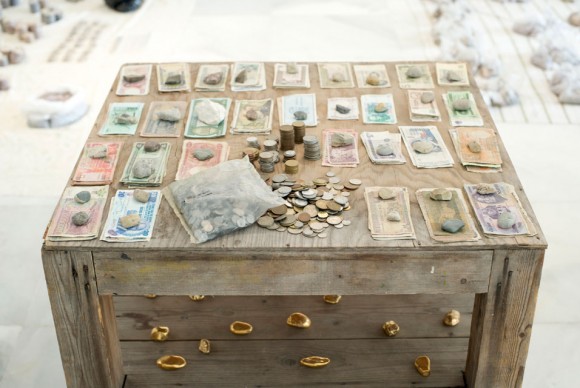
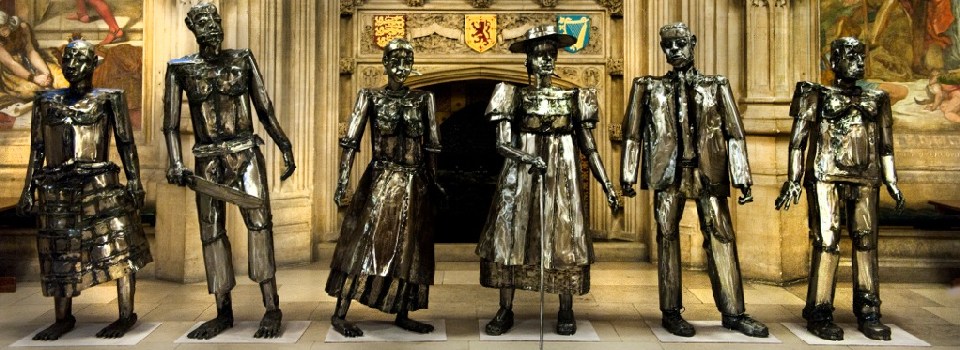
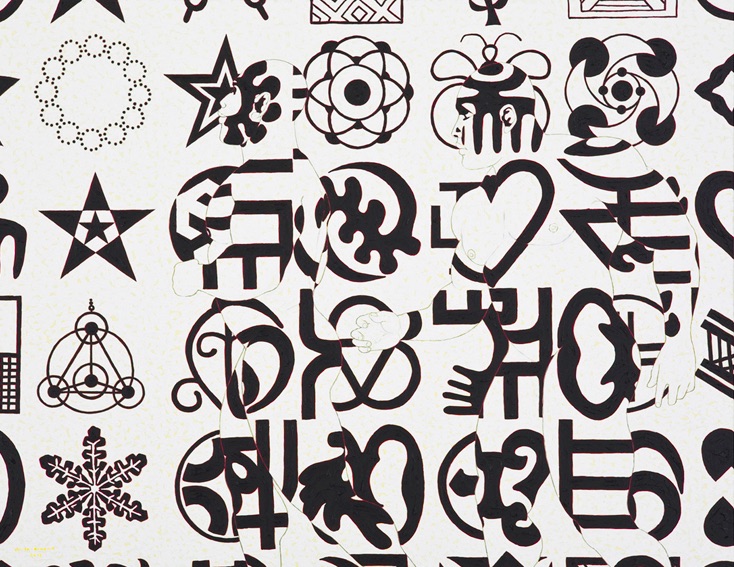
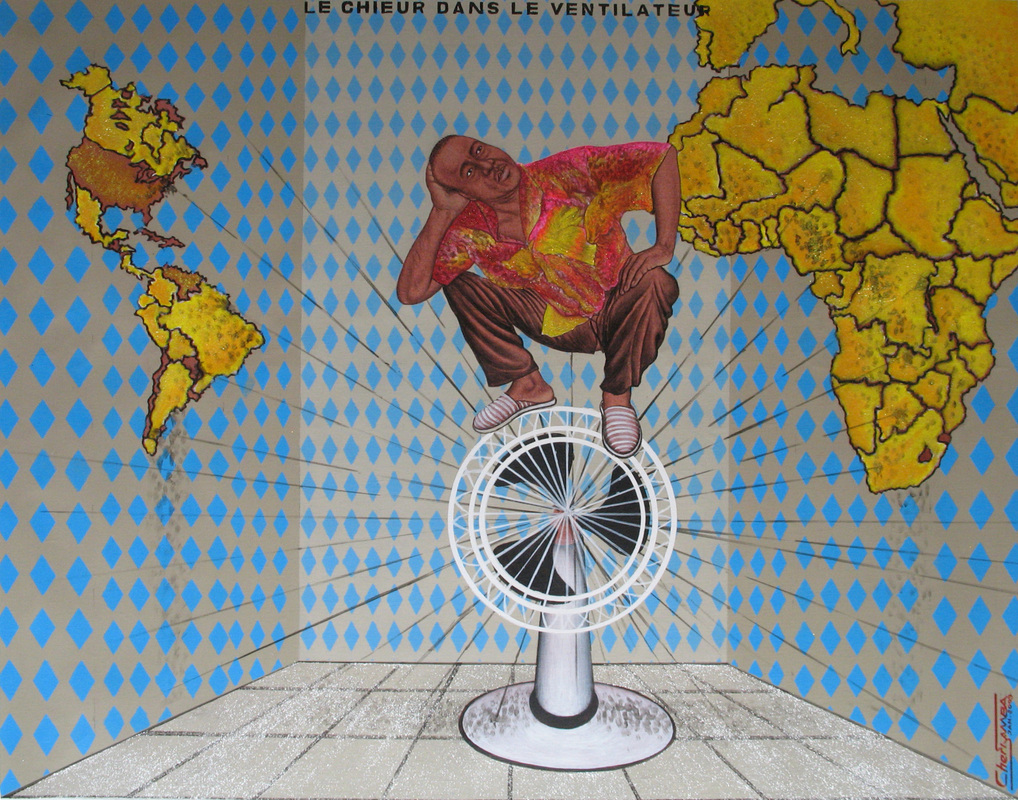
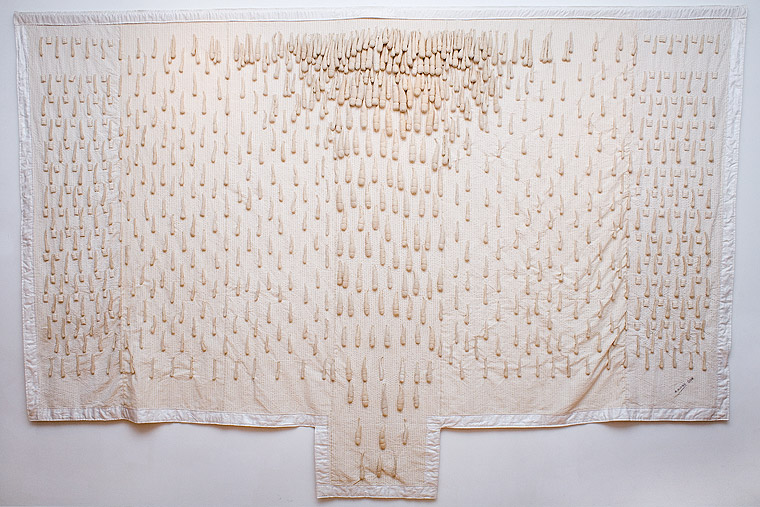
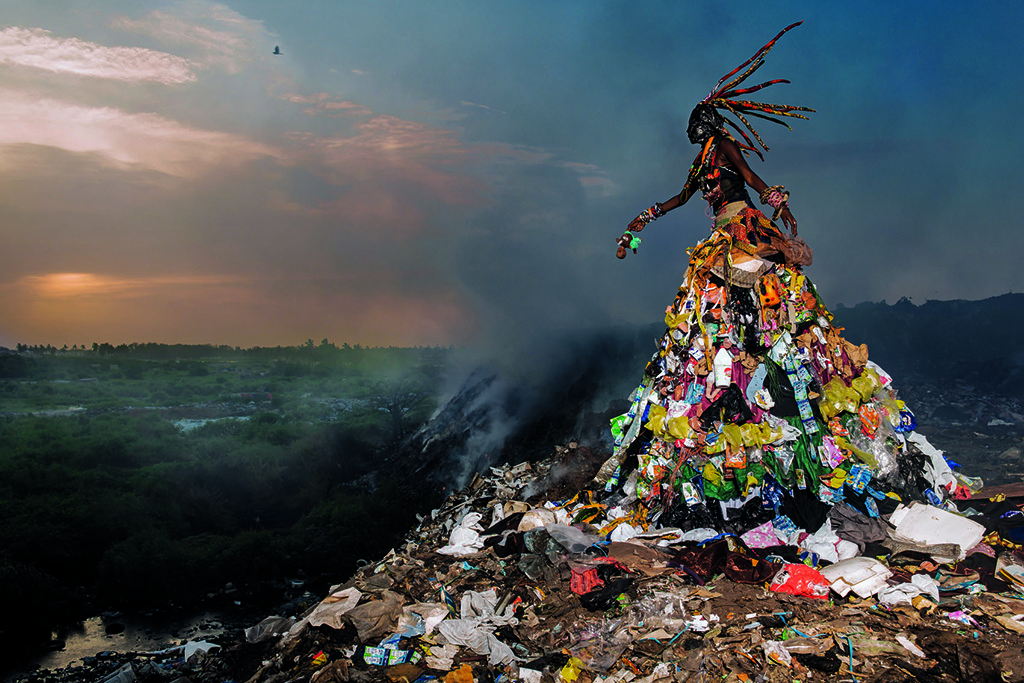
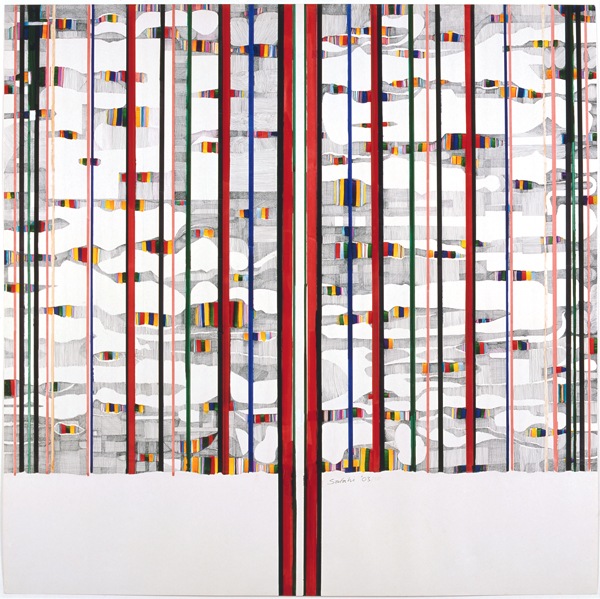
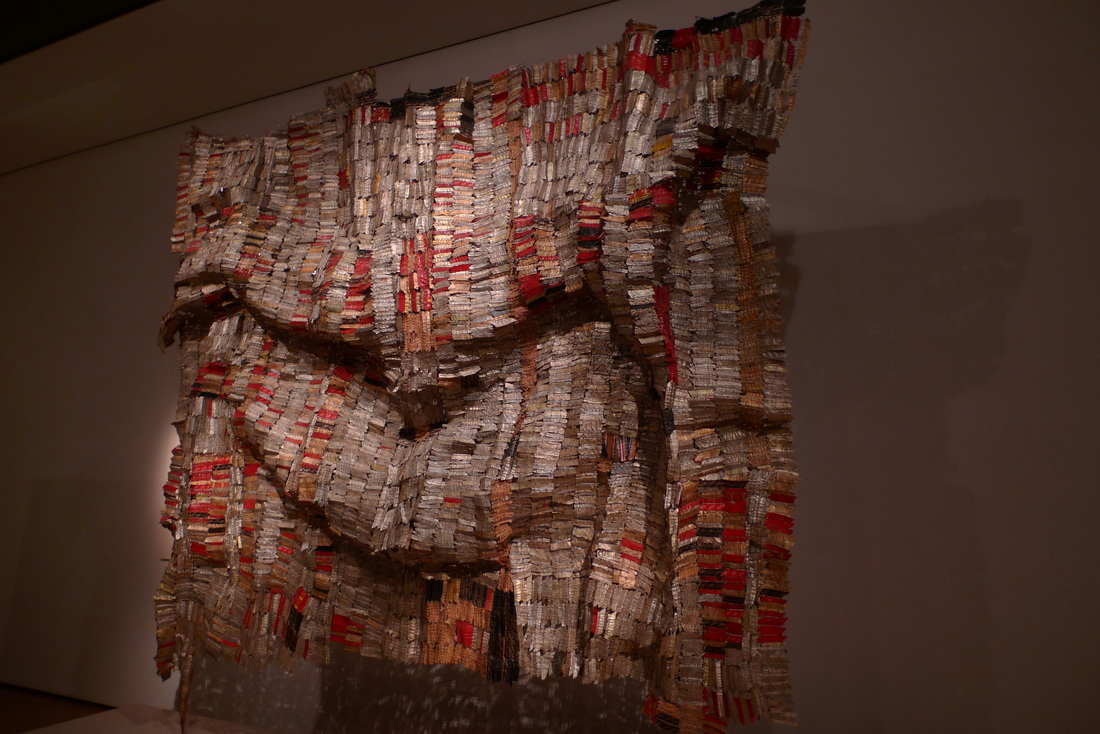
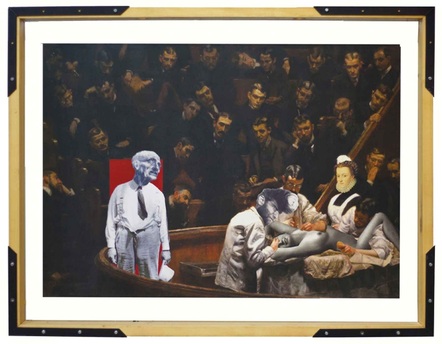
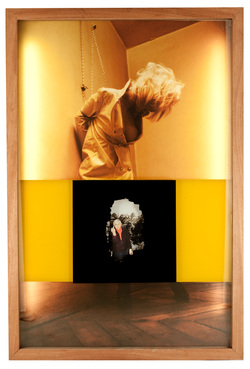
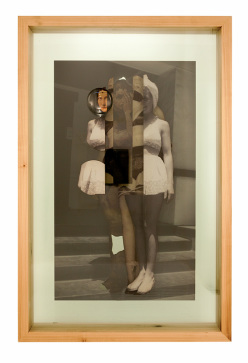
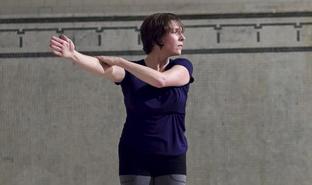
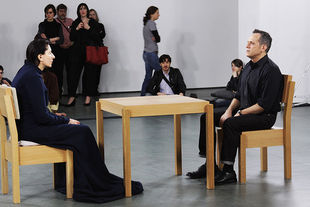
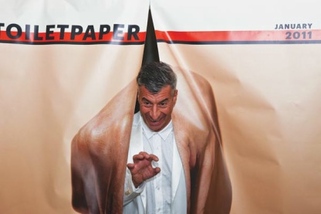
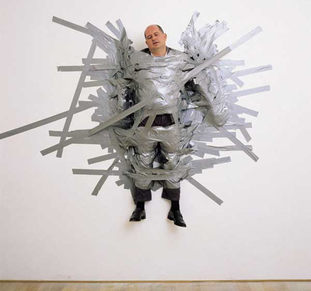
 RSS Feed
RSS Feed
